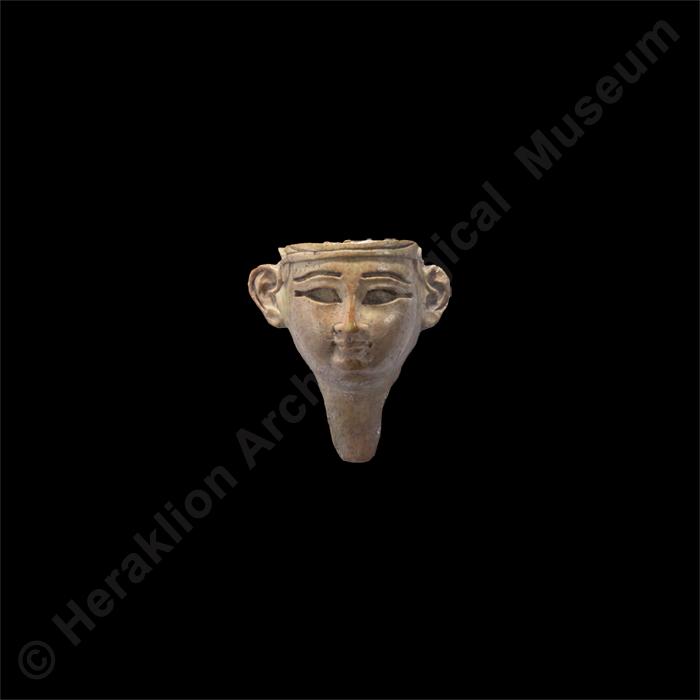Ivory male head
Ο-Ε639
Bone (Ivory)
Almost intact
Max. Height: 2.85 cm.Max. Length: 2.57 cm.
Idaean Cave
Cave, Strip ε
Geometric period:
8th century BC:
Gallery:
XVIICase:
169Exhibition thematic unit:
Geometric - Archaic - Classical period (10th - 4th c. BC). The Sanctuaries. From Minoan cult to the amalgamation of religious beliefsSacred Caves
Description
The excavations in the Idaean Cave have brought many ivory objects to light, including this male head. The unworked back bears many uneven incisions and was obviously set into a different surface which has not been preserved, probably made of an organic material such as wood. The face has protruding ears and pronounced eyes, while the nose, mouth and chin are much less strongly marked. There are notches in the top, indicating that the upper part with the hairstyle was inset and made of a different material. The eyes would have been inlaid, as we see from the hollow sockets. The find is of Eastern origin, probably from Phoenicia. Its discovery in the cave demonstrates the fame of the sanctuary across time and space.Bibliography:
Sakellarakis J., “Ανασκαφή Ιδαίου Άντρου”, Πρακτικά της εν Αθήναις Αρχαιολογικής Εταιρίας 1984, 593, pl. 249γ. Sakellarakis J.A., “The Idaean Cave Ivories”, in J.Fitton (ed), Ivory in Greece and the Eastern Mediterranean from the Bronze Age to the Hellenistic Period, British Museum OccPap85, London, 1992, 114-116. Sakellarakis J.A., “Ivory trade in the Aegean in the 8th B.C.”, in Biblical Archaeology today, 1990. Proceedings of the Second International Congress on Biblical Archaeology, Jerusalem, June-July 1990, 356. Stampolidis N. Chr. - Karetsou A. (eds) Ανατολική Μεσόγειος, Κύπρος-Δωδεκάνησα-Κρήτη, 16ος-6ος αι. π.Χ., Πανεπιστήμιο Κρήτης-Υπ.Πο. ΚΓ’ ΕΠΚΑ, Heraklion, 1998, 270.Author:
S. P.Photographs' metadata
